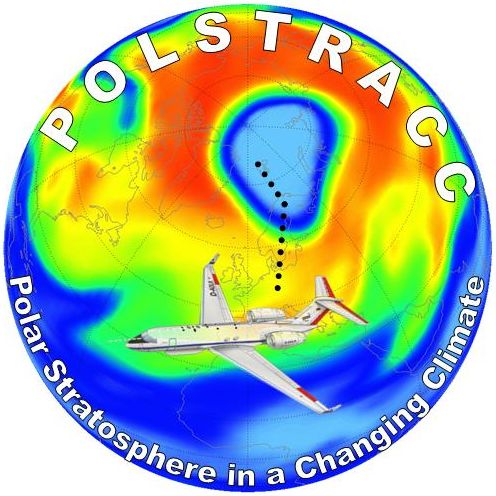POLSTRACC: Difference between revisions
No edit summary |
No edit summary |
||
| Line 13: | Line 13: | ||
The test flights into the early vortex will be carried out from Oberpfaffenhofen, Germany. The winter campaign will be based in at Kiruna Airport (68°N), allowing deep penetration of the polar vortex and sampling the interface region to the surrouding stratosphere including vortex streamers and filaments in the vicinity of the polar vortex. |
The test flights into the early vortex will be carried out from Oberpfaffenhofen, Germany. The winter campaign will be based in at Kiruna Airport (68°N), allowing deep penetration of the polar vortex and sampling the interface region to the surrouding stratosphere including vortex streamers and filaments in the vicinity of the polar vortex. |
||
<br/><br/> |
|||
[[Category:One]] |
[[Category:One]] |
||
Revision as of 08:59, 9 October 2013
The Polar Stratosphere in a Changing Climate
The HALO (High Altitude and LOng Range Research Aircraft) mission POLSTRACC aims on providing new scientific knowledge on the structure, composition and evolution of the Arctic Upper Stratosphere/Lower Stratosphere region (UTLS) in a changing climate. In contrast to previous aircraft campaigns, special focus is set on the investigation of the Lowermost Stratosphere (LMS) and Tropopause Region, which is important for the atmospheric radiation budget and the climate system. Important aspects adressed by POLSTRACC are a detailed characterisation of the Arctic winter LMS, the impact of the polar vortex outflow on the midlatitude LMS, the role of cirrus clouds in the Arctic UTLS region as well as the impact of gravitiy waves in this region. Furthermore, the investigation of polar stratospheric clouds, related chemical and microphysical processes as well as the role of halogen chemistry in the UTLS region are covered by the objectives of POLSTRACC.

The POLSTRACC mission will use a payload of remote-sensing and in-situ instruments for a variety of trace species with contributions from institutes of the Helmholtz Association, the Max-Planck Society, and universities. We plan to cut the mission into two parts, a test campaign with the full payload in December probing the early polar vortex, and an extened deployment in January/March of the following year, covering the evolution of the polar vortex during winter and spring.
The test flights into the early vortex will be carried out from Oberpfaffenhofen, Germany. The winter campaign will be based in at Kiruna Airport (68°N), allowing deep penetration of the polar vortex and sampling the interface region to the surrouding stratosphere including vortex streamers and filaments in the vicinity of the polar vortex.